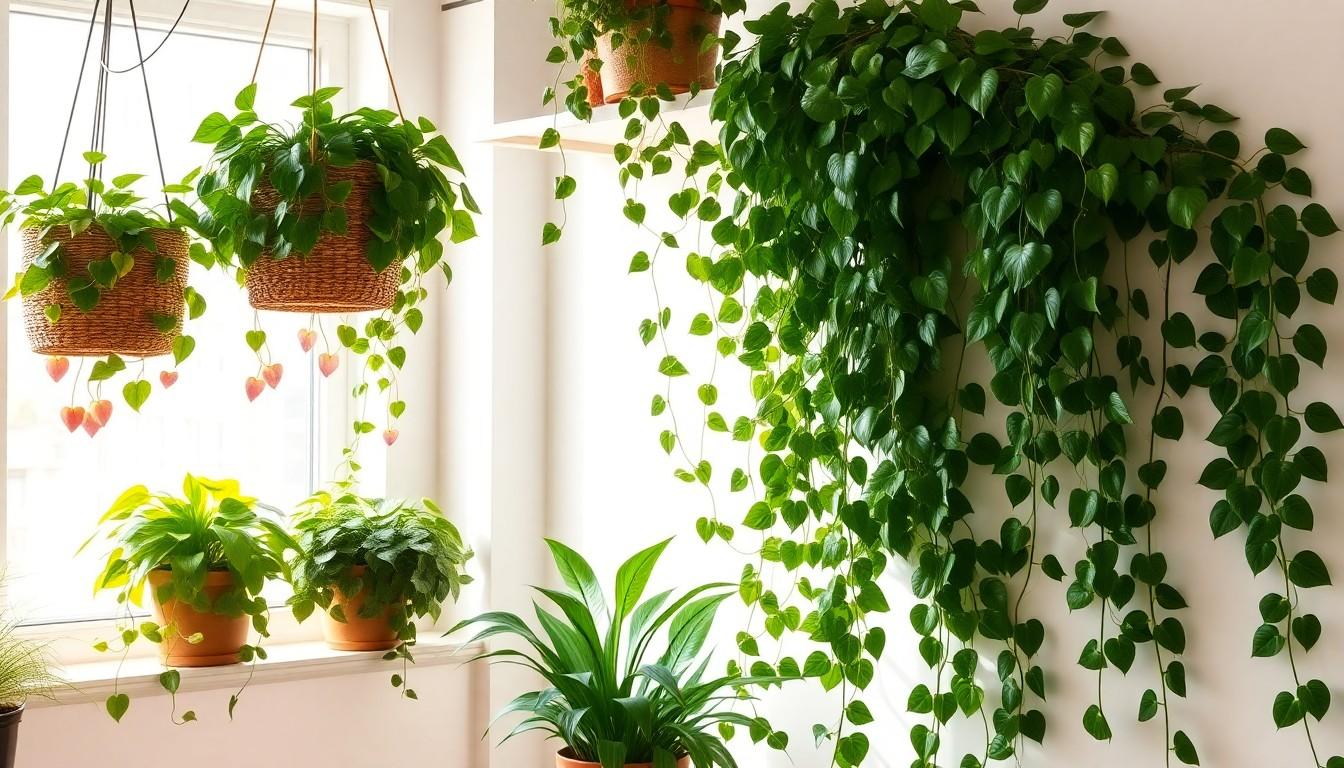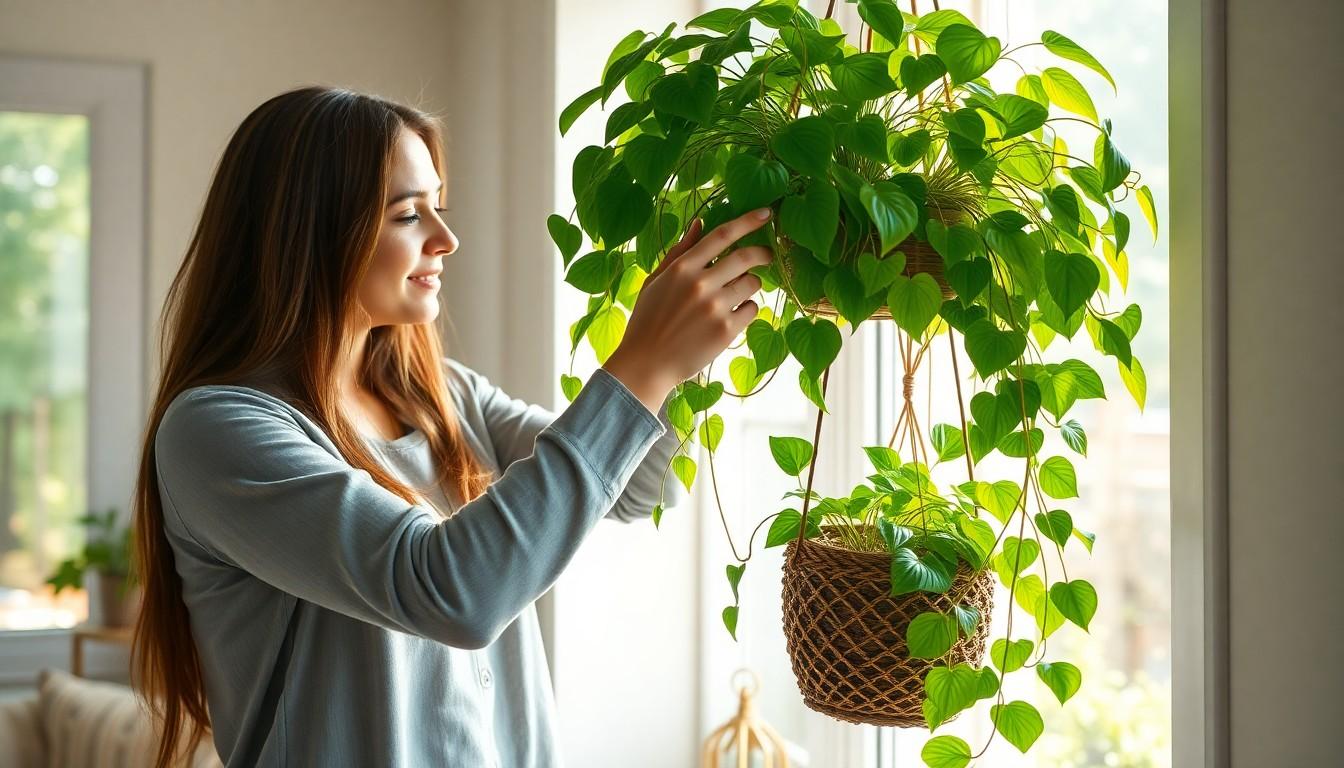Imagine transforming your home into a lush oasis without the need for a green thumb or a degree in botany. Trailing house plants are the perfect solution for anyone looking to add a touch of nature to their space while keeping things effortlessly chic. These leafy beauties not only liven up your decor but also require minimal effort—just a little water and a sunny spot, and they’ll do the rest.
Overview of Trailing House Plants
Trailing house plants offer a versatile solution for home decoration. They add softness and visual interest to any space, making them popular among indoor gardeners. With their cascading leaves, these plants create a lush environment while taking minimal space.
Many varieties thrive indoors, easily adapting to various lighting conditions. Options like pothos, string of hearts, and philodendron are particularly favored for their resilience and stunning foliage. Pothos, known for its heart-shaped leaves, can grow in low light, making it suitable for darker corners.
Maintenance remains straightforward for these plants. Regular watering encourages growth, and most require watering only when the topsoil dries out. Fertilizing every few months supports healthy development but isn’t strictly necessary.
Placement matters for displaying trailing plants effectively. Hang them in baskets or use shelves to allow their vines to drape gracefully. Additionally, positioning them near a window permits ample sunlight, which enhances their vibrancy.
Variety plays a significant role in selecting trailing house plants. Some offer colorful leaves and unique patterns, while others display delicate flowers. Choosing the right plant often depends on personal taste and the specific ambiance desired in the home.
Incorporating trailing house plants into decor can improve air quality too. Many species filter indoor pollutants, contributing to a healthier living environment. Thus, these plants not only beautify spaces but also promote well-being.
Popular Trailing House Plants

Many trailing house plants add elegance and charm to indoor environments. Each variety brings unique attributes and care requirements.
String of Hearts
String of hearts thrives with minimal care. This plant produces heart-shaped leaves that cascade beautifully. It’s well-suited for hanging baskets, where its vines can gracefully drape. Adequate sunlight enhances its vibrant colors, while occasional watering prevents dryness. Ideal for beginners, string of hearts adapts easily to different light conditions, making it versatile for various spaces.
Pothos
Pothos stands out as a popular choice among house plant enthusiasts. Its lush, trailing vines can reach impressive lengths, creating a dramatic effect. This hardy plant tolerates low light, although brighter settings promote optimal growth. Pothos requires weekly watering, but it’s forgiving if missed occasionally. Varieties such as marble queen and golden pothos offer different leaf patterns for decorative flair.
English Ivy
English ivy creates a classic look in any home. Distinctive for its pointed leaves, it can climb or trail elegantly. This plant flourishes in moderate light and benefits from consistent moisture. Regular pruning encourages fuller growth, helping maintain its shape. English ivy also purifies indoor air, making it a beneficial addition to living spaces.
Benefits of Trailing House Plants
Trailing house plants offer both visual and health benefits, making them a fantastic addition to any home.
Aesthetic Appeal
Trailing plants provide a soft, flowing appearance that enhances the ambiance of indoor spaces. Their cascading leaves create a natural aesthetic that softens corners and fills voids. A variety of colors and textures add depth to decor. Hanging baskets or elevated shelves allow these plants to showcase their beauty. Additionally, the adaptability of plants like pothos and string of hearts lets them fit seamlessly into different design styles, from modern to bohemian. Homeowners can mix and match plants to create unique displays, tailoring aesthetics to their personal taste.
Air Purification
Many trailing house plants contribute to improved indoor air quality, providing a healthier living environment. They filter common indoor pollutants, such as formaldehyde and benzene, making them valuable for enhancing air clarity. Studies show that plants like English ivy and pothos can significantly reduce toxins, promoting well-being. The presence of greenery can lead to enhanced mood and productivity, as cleaner air supports concentration. Regularly incorporating these plants into home decor not only beautifies but also positively impacts overall health and comfort.
Care Tips for Trailing House Plants
Caring for trailing house plants involves understanding their specific needs to thrive. Proper light and watering habits ensure healthy and vibrant growth.
Light Requirements
Trailing house plants thrive in various lighting conditions. Bright, indirect light typically enhances their growth. For example, pothos flourishes in bright, filtered sunlight, while string of hearts adapts well to moderately lit spaces. Avoid direct sunlight, which can scorch leaves. Each species benefits from some level of light exposure, so observing their response to different locations helps determine ideal placements. Regularly rotating the plants also ensures even growth.
Watering Guidelines
Watering practices significantly impact the health of trailing house plants. Most require watering when the top inch of soil feels dry. Pothos, known for its resilience, can tolerate occasional neglect. Conversely, English ivy prefers consistent moisture and shouldn’t be allowed to dry out completely. Using pots with drainage holes prevents waterlogged roots. Adjusting frequency with seasonal changes enhances care, as plants generally need less water during winter months. Observing the plant’s behavior helps refine watering routines for optimal growth.
Propagation of Trailing House Plants
Propagation offers an enjoyable way to expand a collection of trailing house plants. Various methods cater to different plant types, ensuring a successful transition for new plants.
Methods of Propagation
Cuttings serve as the most common method for propagation. Taking a healthy cutting from the parent plant allows roots to form when placed in water or a suitable soil mix. Layering represents another effective option, where the trailing vine gently touches the soil, encouraging rooting while still connected to the mother plant. Division also offers a way to propagate plants that have become larger and bushier, providing even more growth opportunities.
Best Practices
Using clean, sharp tools during propagation helps prevent infections. Maintaining humidity levels promotes healthy root growth, especially for cuttings in water. Additionally, placing cuttings in bright, indirect light encourages faster development. Regularly checking for roots before transplanting into soil ensures readiness for new growth. Using a well-draining potting mix facilitates healthy roots and minimizes the risk of rot.
Conclusion
Trailing house plants are more than just decorative elements; they bring life and vibrancy to any space. Their adaptability and low maintenance make them perfect for anyone looking to enhance their home environment without the stress of complex care routines.
By selecting the right varieties and placing them thoughtfully, individuals can create stunning displays that reflect personal style while promoting a healthier indoor atmosphere. The benefits of these plants extend beyond aesthetics, contributing to improved air quality and overall well-being.
Incorporating trailing house plants into home decor is a simple yet effective way to enjoy nature indoors, making every room feel more inviting and serene.

